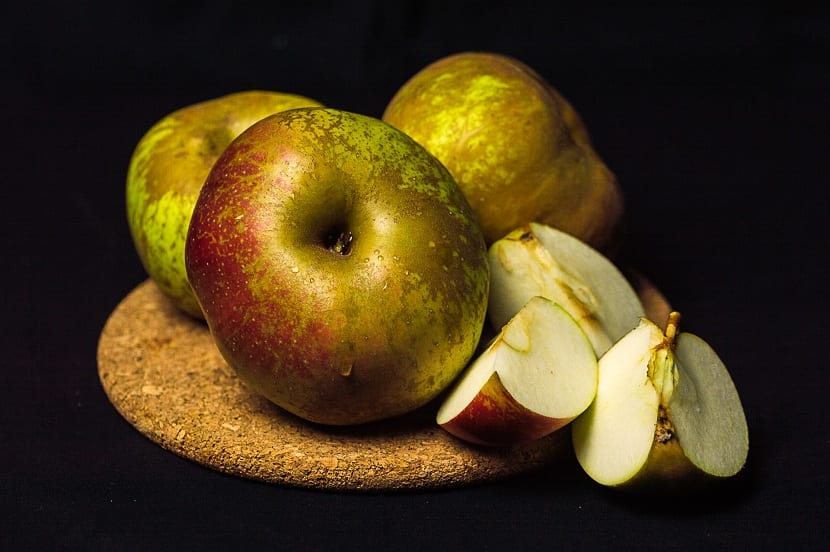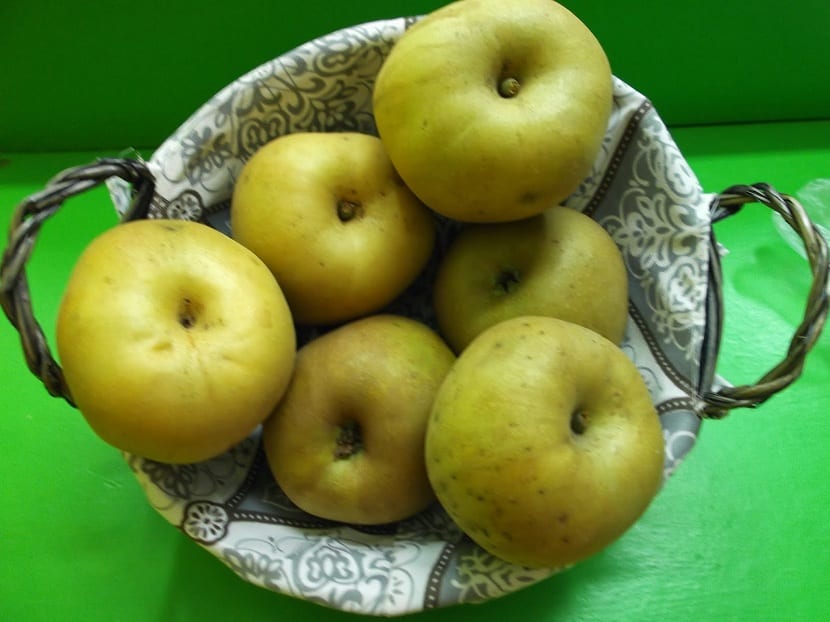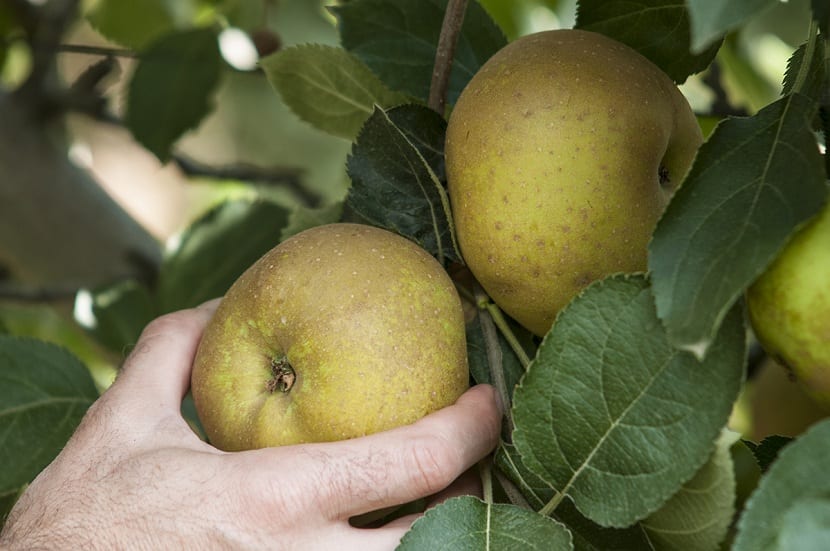
Today we are going to talk about a well-known apple variety of Canadian origin. It's about the reineta apple. The apple has emerged from different pylons of other species. Its provenance is really unknown but it is a fairly old parity that has been historically documented since the beginning of the XNUMXth century. Its consumption has been limited to Europe, mainly in Italy, Spain, Germany and France, with France and Italy being the main producers of these countries.
In this article we are going to tell you what are the characteristics of the pippin apple and how it should be grown.
Key features

This fruit has a brownish green color and the entire surface of the fruit has russeting. Russeting is nothing more than a special type of slightly rough skin and with a color that generally varies between greenish brown and yellowish brown or reddish gray. It has a texture that suggests how the apple had a thin cork film. The shape of the apple is very irregular and its flesh has a thick but not very juicy white texture. When you bite it, it is usually a firm but mealy texture.
They are apples with a medium size, flattened and asymmetrical shape. Despite having a floury texture, they are quite juicy and very aromatic. What is most striking about this variety of apples is the flavor that has a mixture of sweet and sour taste. And it is that at the time of harvest they have a somewhat more acidic taste and, as the days go by after their harvest, they become sweeter.
This type of variety has the characteristic of being climacteric. That is, the ripening process continues after harvesting. Hence, the taste changes from more acid to sweeter as the days go by after harvesting. To keep them in good condition, businesses usually use it to place them in atmospheres controlled with oxygen and carbon dioxide. In this way, the modulation will stop and it will be able to maintain the firmness and acidity that they have when harvested and possible rottenness is avoided.
There are those who preserve them in natural conditions so that they continue to mature and improve their conditions. Being natural you can see as the skin wrinkles, they lose water and some acidity but become sweeter and more aromatic for other purposes. Pippin apples open less when they mature on the tree and are better preserved for longer than the gray variety of Pippin.
Pippin apple harvest

When the apples are picked from the tree they must be dry. All those that do not have whole skin and are healthy must be removed for immediate consumption. You have to be careful with do not hit them and they are placed in wooden trays with a thick paper at the bottom.
Once stored in the warehouse, it is tried that they do not have any direct sunlight, with little humidity and a constantly cool temperature. This is how it manages to maintain the characteristics without any problem until the time of sale and distribution. From time to time those that are rotten that are usually affected by some fungi, blue spot, black spot and Penicillium are checked and removed.
They are ideal apples to eat fresh when they are just connected. For some children, they may seem too tart and may not be very suitable for baking at this time. However, when they mature a little more and they become sweeter if they have a good place in pastries. Acidity is measured in grams of malic acid. This acid is lost as apples ripen under natural conditions. In the conservation conditions mentioned above, they are kept as if they had been collected from the tree for as long as possible.
A trick we have to choose a white pippin apple is to choose a yellow one that has a little wrinkled skin that indicates the one that has lost water. This apple will be ripe enough to enhance the flavor and aroma and the sweetness will be more concentrated. Some of the areas should have a little red plating.
Pippin apple cultivation

To start a plantation of apple trees of this variety, the first thing you have to do is look for a farm with a north-south orientation preferably. The only thing that is demanding in terms of location is that it is at a height between 450 and 600 meters above sea level. The land must be alluvial, that is, with river carry-over materials that are bones and have good drainage so that the tree does not suffer when irrigation water accumulates. This is already telling us that the frequency of irrigation and the quantity must be regulated so as not to result in a storage of the water.
The soil pH must be between 5,5 and 7. The pippin apple has vigorous vegetation so we have to avoid planting it in trough areas where the soils are usually very fertile and in very clay soils as they will give the tree even more vigor. The more vigor a tree has, the less production it will have.
You have to choose the training system for planting the apple. The planting frame is usually 4,50 meters between row and row and 2,70 meters between trees. The maintenance of the ground must be covered with grass in the center of the street to avoid excessive soil erosion. It is advisable to use a contact herbicide that is never residual in the rows. With these plants in the rows, we ensure that the microorganisms and animals in the soil have an ideal environment to live. In addition, we achieve that the erosion by the water will be zero.
As for irrigation, the most recommended is the one that is drip with fertigation. Fertilizers are added to the water, which makes the underground contamination practically nil.
I hope that with this information you can learn more about the pippin apple.
I love the reineta apple, here in Argentina they sell it
Hello Monica.
In that I cannot help you, since we are in Spain. You can always ask in supermarkets, greengrocers or even in nurseries if you would like to have the tree.
Regards!